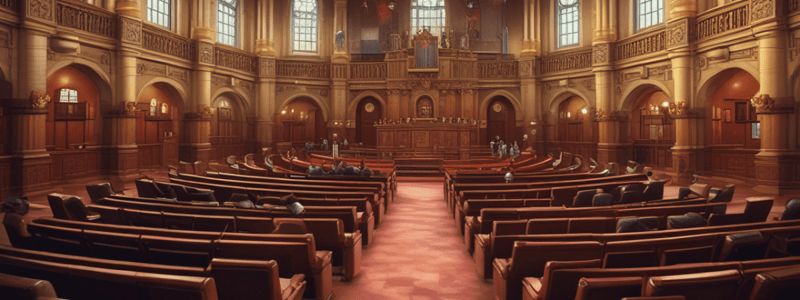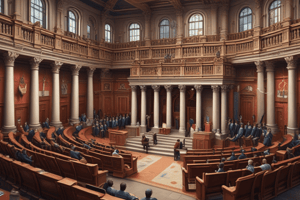Podcast
Questions and Answers
What are the two main purposes of the principle of non-retroactivity in law?
What are the two main purposes of the principle of non-retroactivity in law?
- Ensures predictability and legality
- Prevents unfair and unreasonable results
What is the difference between 'retroactive' and 'retrospective' in the context of legislation?
What is the difference between 'retroactive' and 'retrospective' in the context of legislation?
Retroactive (or 'strong') legislation operates backwards in time, while retrospective (or 'weak') legislation only looks backwards in time.
What is a 'legal fiction' and a 'deeming clause' in the context of retroactive legislation?
What is a 'legal fiction' and a 'deeming clause' in the context of retroactive legislation?
A legal fiction and a deeming clause are mechanisms that can be used in retroactive legislation to potentially attach new consequences to a past event.
What are the main obstacles to retroactive legislation according to the text?
What are the main obstacles to retroactive legislation according to the text?
What are the two main exceptions to the presumption against retroactivity discussed in the text?
What are the two main exceptions to the presumption against retroactivity discussed in the text?
How did the Constitutional Court in the S v Ndiki case determine whether retroactive legislation was permissible?
How did the Constitutional Court in the S v Ndiki case determine whether retroactive legislation was permissible?
What is the difference between adoption and promulgation in the legislative process?
What is the difference between adoption and promulgation in the legislative process?
What is the significance of the enacting clause in the promulgation of legislation?
What is the significance of the enacting clause in the promulgation of legislation?
Explain the 'endless circle of invalidity' problem discussed in relation to Section 14 of the Interpretation Act.
Explain the 'endless circle of invalidity' problem discussed in relation to Section 14 of the Interpretation Act.
According to the Cats Entertainment case, what can relevant functionaries do before an Act is in force?
According to the Cats Entertainment case, what can relevant functionaries do before an Act is in force?
What is the common law presumption regarding the application of legislation?
What is the common law presumption regarding the application of legislation?
What are the reasons given for the common law presumption that legislation only applies to the future?
What are the reasons given for the common law presumption that legislation only applies to the future?
Flashcards are hidden until you start studying



